On the Road is a weekday feature spotlighting reader photo submissions.
From the exotic to the familiar, whether you’re traveling or in your own backyard, we would love to see the world through your eyes.
Albatrossity starts off the week by telling us all about the birds and the bees, and then we are treated to four beautiful days in nature with Uncle Eb and lashonharangue.
(Click on the image below for a bigger, non-blurry version.)
Albatrossity
Picking up where we left off a couple of weeks ago, here are some more shots of late-summer and early fall birds and other critters here in Flyover Country. Hope you enjoy them!
And 2024 calendars are now available. Christmas is coming!
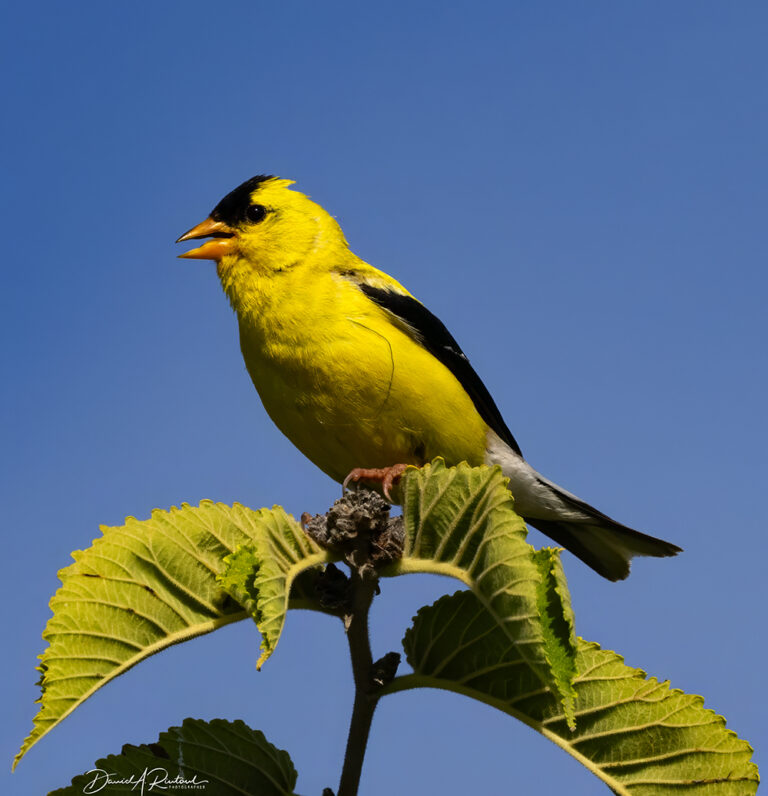
American Goldfinches (Spinus tristis) get very pretty in the springtime, but generally do not start to court or breed until July or even August. They are waiting for the native thistles to ripen; they use the thistle down for nest construction, and eat the seeds or feed them to the nestlings. Most seed-eating birds feed their young with insects and spiders, but goldfinches are one of the few that feed them a diet of mostly seeds. Click here for larger image.
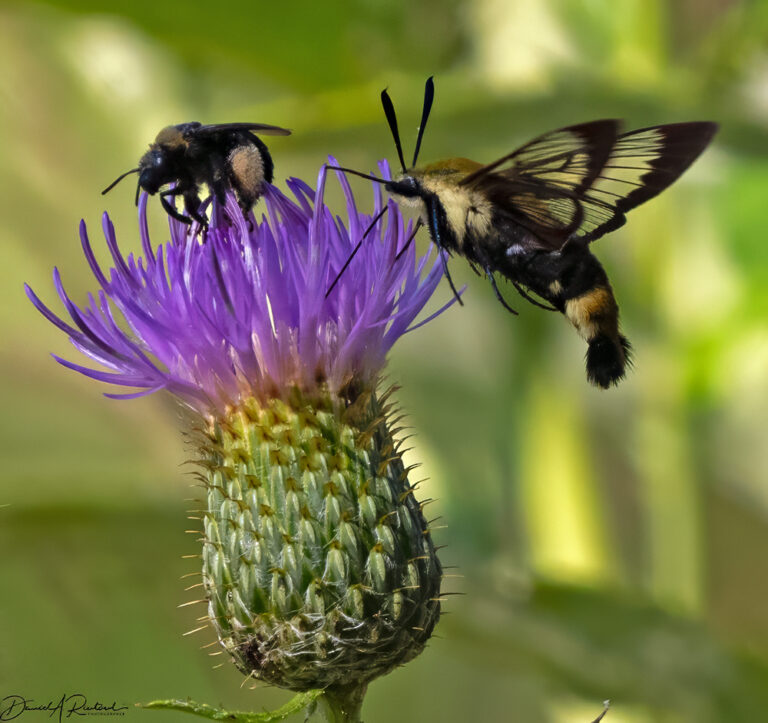
And here is one of those native thistles, the Tall Thistle (Cirsium altissimum), hosting a couple of pollinators. The one at right is a Snowberry Clearwing moth (Hemaris diffinis), the other is a native bumblebee that I have not IDed at the species level. Tall Thistle flowers are very attractive to bees, wasps, moths, butterflies and other pollinators, and a pasture or roadside adorned with these flowers can be a great place to see lots of insects. Click here for larger image.
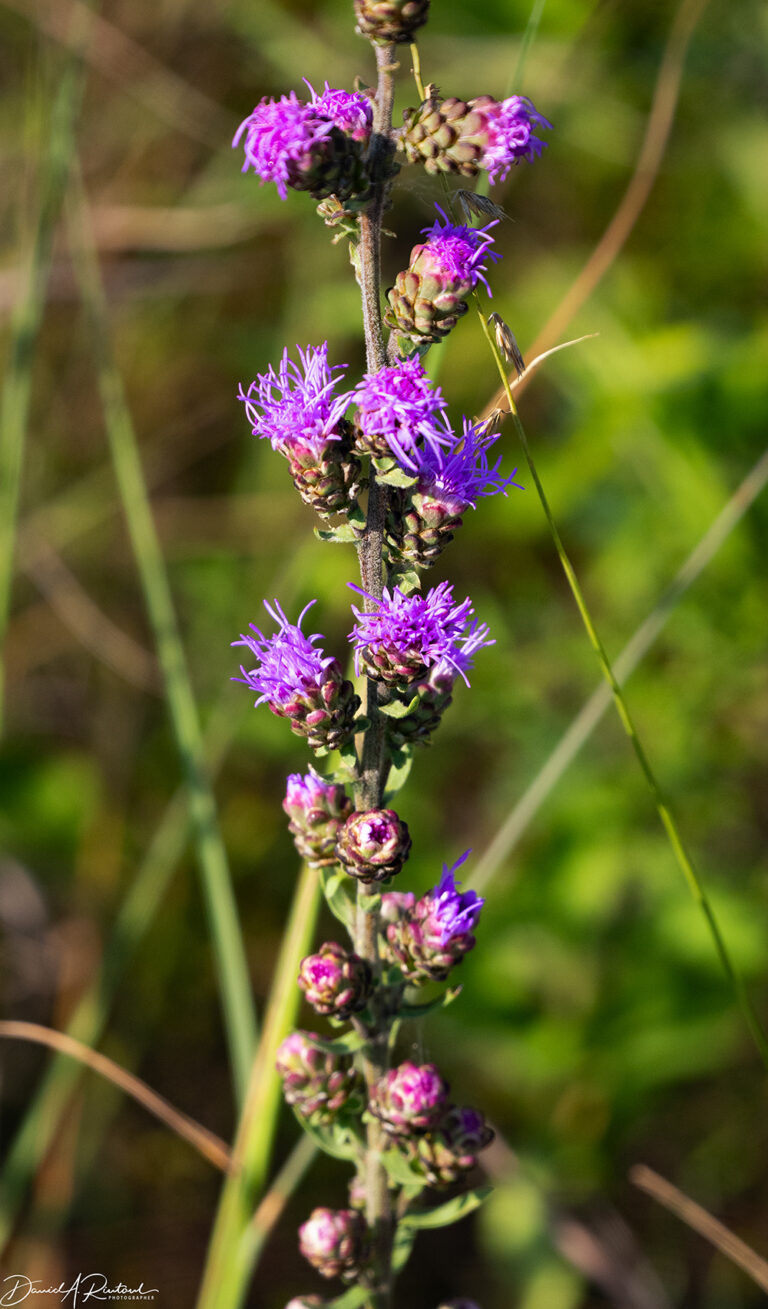
Another late-summer flower is the Tall Gayfeather (Liatris aspera, aka Button Gayfeather, Rough Gayfeather, Button Blazing-star, Tall Blazing-star). It is a fairly common flowering plant on our native prairies, but also makes an excellent plant for gardens and borders. Click here for larger image.
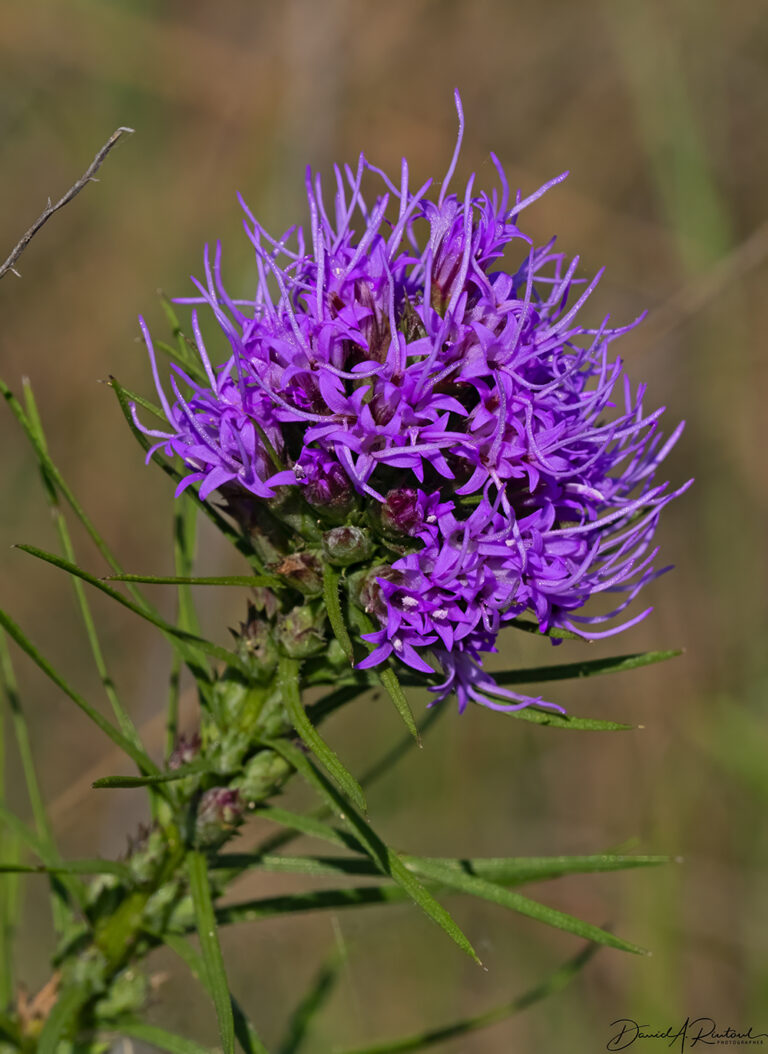
Another of the several Liatris species on the prairies here is Dotted Gayfeather (Liatris punctata, aka Blazing-star, Button Snakeroot). The “dotted” part refers to the speckled leaves; the “snakeroot” refers to the fact that this drought-resistant plant can have a taproot up to 15 ft. long. Click here for larger image.
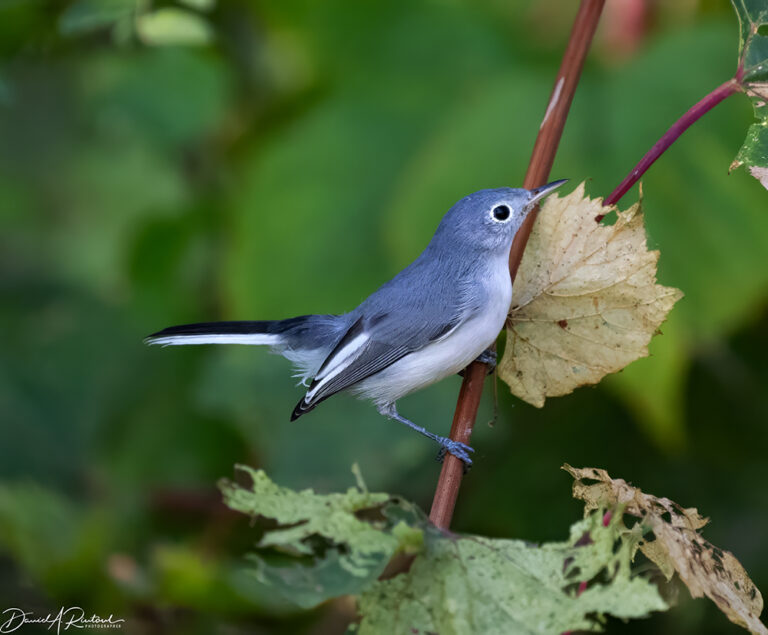
It has been a great year for our local Blue-gray Gnatcatchers (Polioptila caerulea); I seen plenty of young gnatcatchers this fall. This is a female (identified by the lack of a black eyebrow) in very fresh plumage. She was foraging (along with lots of other birds) in a patch of pokeberries, which also attract a lot of insects for her to eat! Click here for larger image.
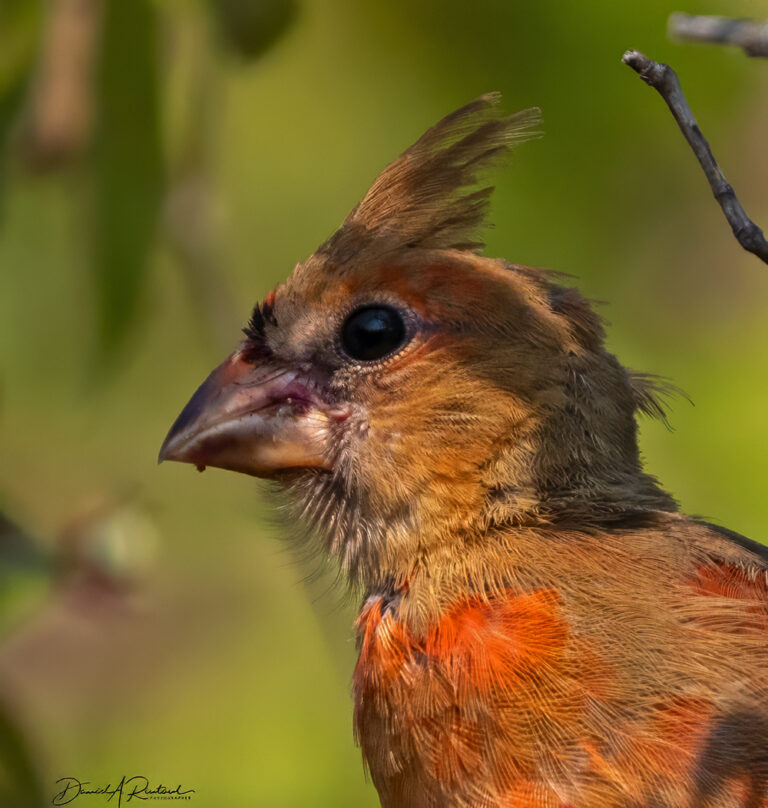
Another pokeberry aficionado was this young male Northern Cardinal (Cardinalis cardinalis), molting into that flashy red plumage that we associate with this popular bird. You can see traces of his last meal smeared on his blotchy beak! Click here for larger image.
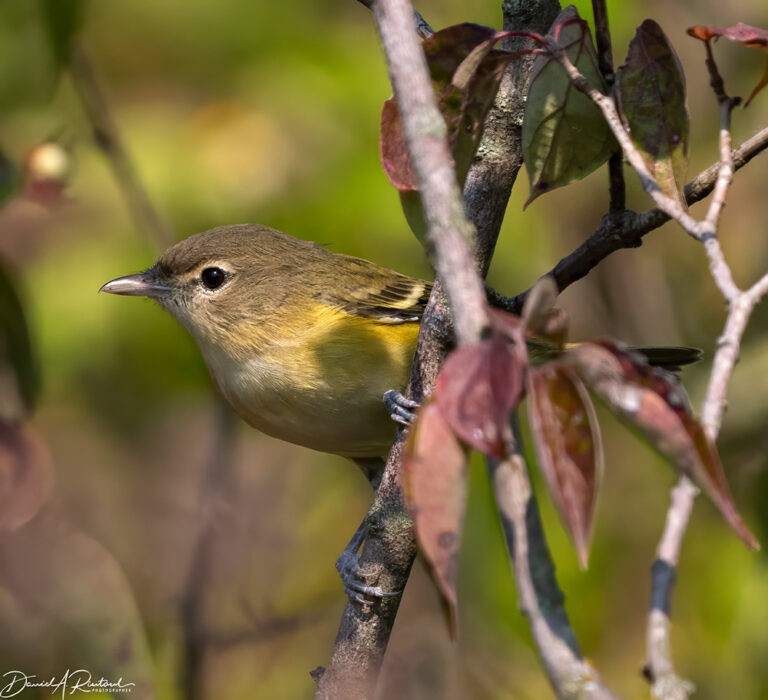
This Bell’s Vireo (Vireo bellii) has already finished with the fall molt, and is in very fresh and spiffy plumage. By the time you are reading these words, this small and unobtrusive bird will be wintering along the Pacific Coast of Mexico. That sounds like a pretty good idea to me. Click here for larger image.

Another handsome vireo species, which I usually only see in fall migration here, is the Blue-headed Vireo (Vireo solitarius). That specific epithet is a holdover from when this species was lumped with two other species (Cassin’s Vireo and Plumbeous Vireo) that have now been elevated to full species status; the lumped former species was called Solitary Vireo. If you live in the southern US, you can see these throughout the winter, and if you live in Canada or the Appalachians, you are blessed with these guys in the breeding season. Here we only get them in migration, and most often in fall, when they seem to linger longer. Click here for larger image.
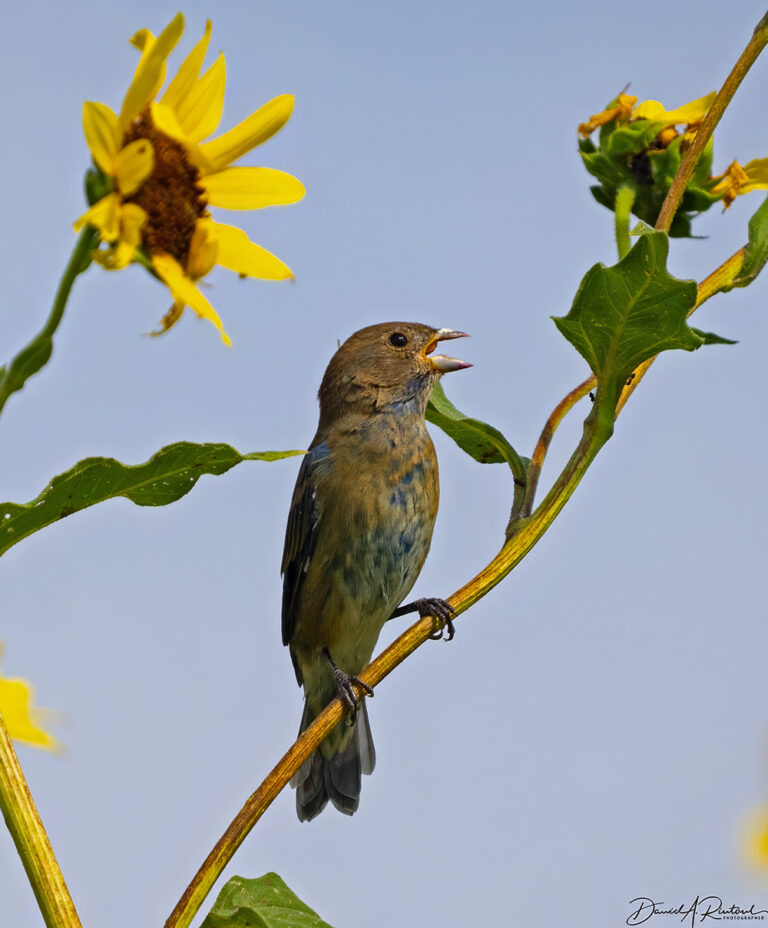
Sunflowers are the state flower of Kansas, and vast expanses of sunflowers can still be found in the state in late summer. They attract lots of species, like this hatch-year male Indigo Bunting (Passerina cyanea). He won’t molt into that stunning blue plumage until late winter or early spring, and that will happen ion the wintering grounds in Mexico or Central America. A few of these birds winter in Florida, however, so if you are fortunate (or unfortunate) enough to live there, you can watch them turn from brown to indigo next spring. Click here for larger image.
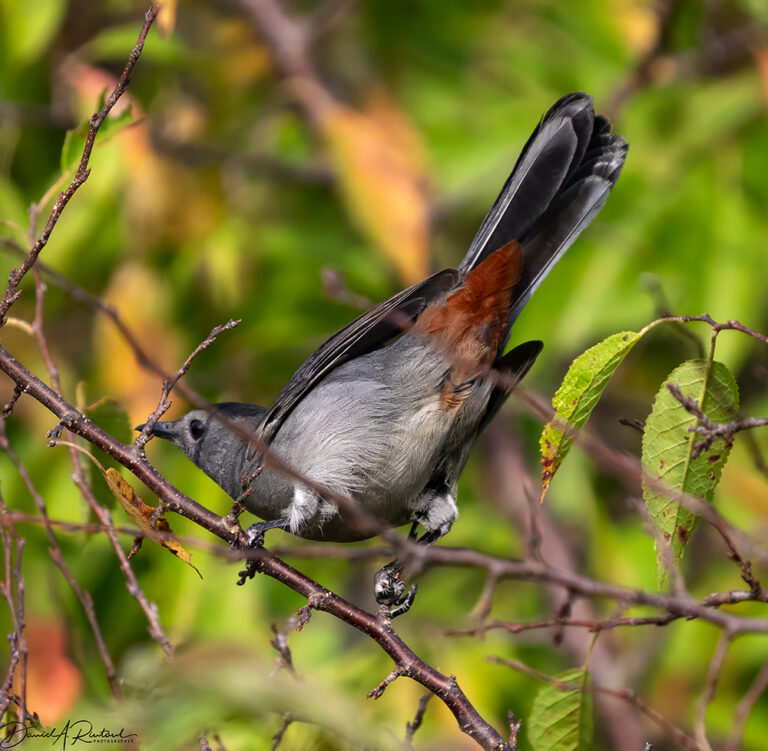
Our final image is a Gray Catbird (Dumetella carolinensis), showing off those fluffy rusty/rosy undertail coverts. This bird also graces my 2024 Bird Butts calendar, which is now available (along with the more sedate Birds of Flyover Country and a new addition, Hawks and Owls of Flyover Country), on the Lulu website. Click here for larger image.

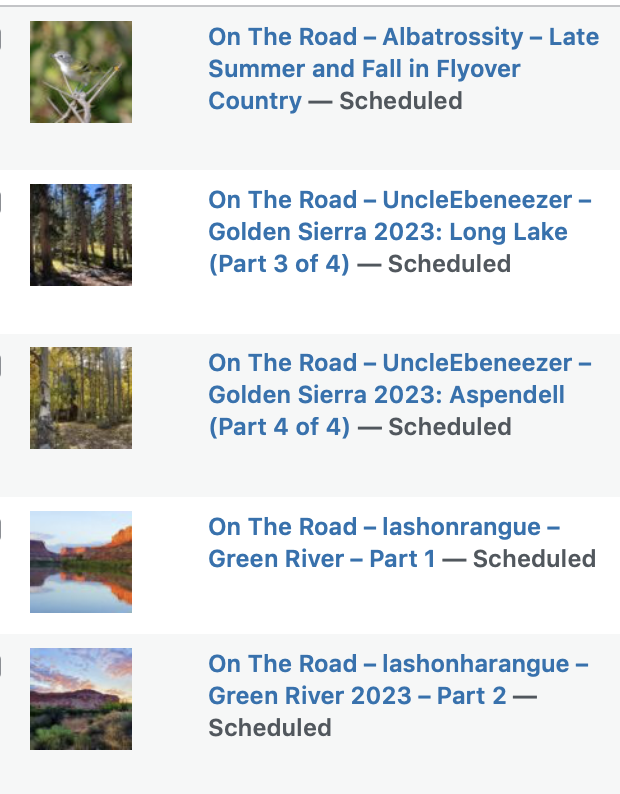
eclare
It’s always nice to see your photos on a Monday. I love all of the purple flowers.
gene108
Beautiful pictures.
The beauty of the birds and plants really stands out in these pictures.
J.
Gorgeous photos as usual. Do you sell them? (I saw your name stamp but couldn’t find a website.)
Albatrossity
Thanks, all.
@J.: If you click on my nym in this reply, it should take you to my website.
Jerry
Such cute li’l dinosaurs
OzarkHillbilly
Da tings I larn heah. Thanx A.
SteveinPHX
Thank you as always. Helps get Monday off on the right foot.
WaterGirl
Albatrossity, I love all the flowers this morning!
Oh, and not one chuckle about the birds and the bees reference? You guys suck. //
Albatrossity
@WaterGirl: Well, to be fair, if we chuckle in front of our screens, you can’t hear us. And I did chuckle!
sab
@Albatrossity: Happy Cyber Monday. I had forgotten there was such a thing when I just ordered a bird butts calendar.
Albatrossity
@sab: Thanks! I know that the Bird Butts calendar is going to a good home!
Chat Noir
I love your pictures and descriptions. Thanks!
arrieve
I needed this today. Gorgeous as always, Albatrossity.
Rob
@Albatrossity: Thank *you*!
I just purchased the flyover country calendar. We are looking forward to its arrival.
StringOnAStick
The “camo” bee is great; the moth that looks like a bearing of a stinger is such a clever twist. Sometimes I take a milk crate and sit by something blooming to see what is working the pollen mines; it’s always fascinating.
Lovely birds, as always.
Albatrossity
@Rob: Thanks! I hope you enjoy it; I do enjoy creating these every year!
Yutsano
Obligatory.
You’re welcome WaterGirl. :P
way2blue
Hat’s off to birds that catch gnats. Lot of work for a morsel. Albeit they often dance around my face during late summer. The gnats that is…